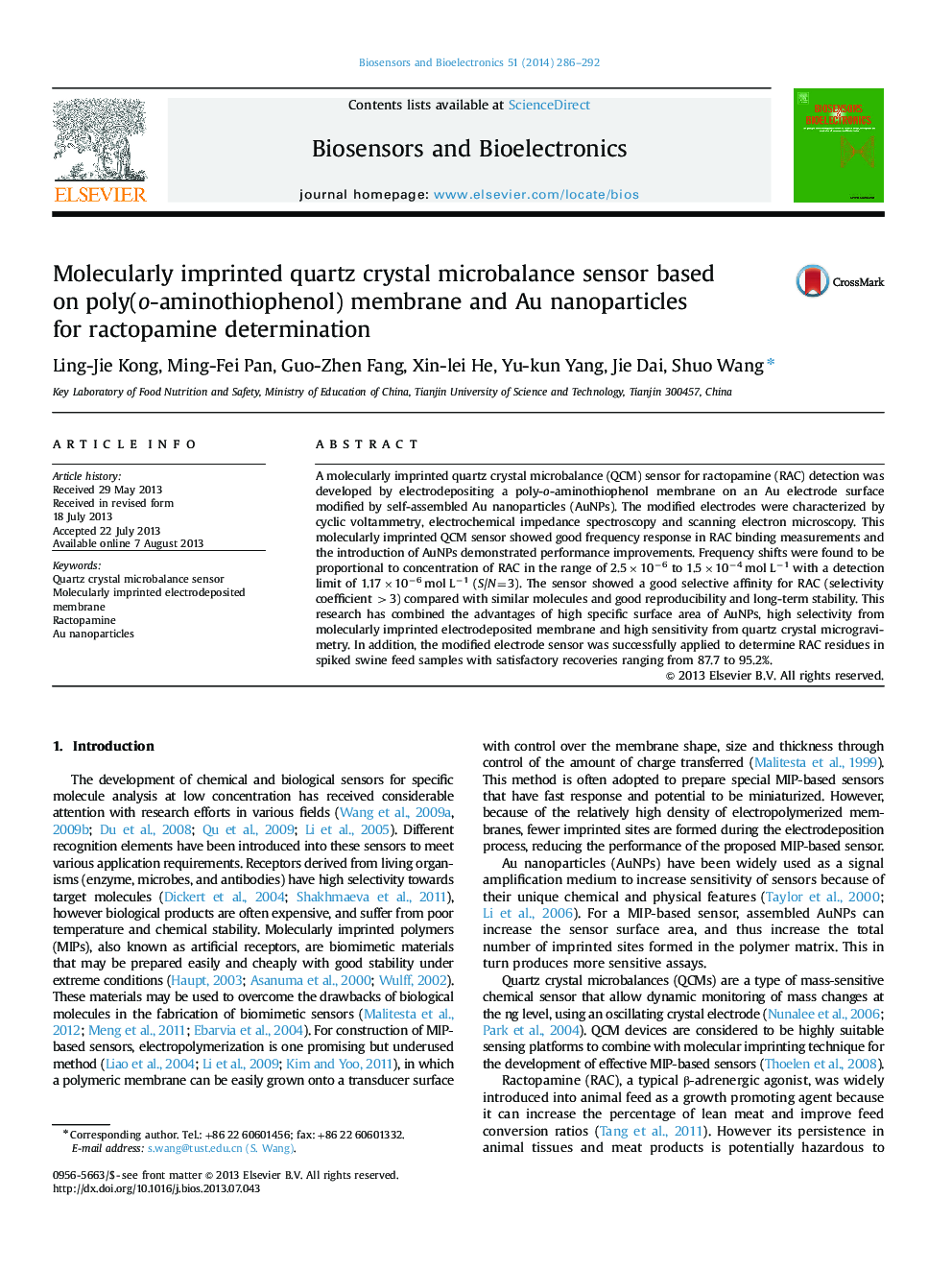| Article ID | Journal | Published Year | Pages | File Type |
|---|---|---|---|---|
| 866577 | Biosensors and Bioelectronics | 2014 | 7 Pages |
•This research combined the advantages of nanoparticle synergy, molecular imprinting technology and piezoelectric sensing.•The integration of Au nanoparticles into the electrodeposited membrane has enhanced the sensor's sensitivity for ractopamine analysis.•This work provides a promising method for enhancing the performance of MIP-based chem- and bio-sensors.
A molecularly imprinted quartz crystal microbalance (QCM) sensor for ractopamine (RAC) detection was developed by electrodepositing a poly-o-aminothiophenol membrane on an Au electrode surface modified by self-assembled Au nanoparticles (AuNPs). The modified electrodes were characterized by cyclic voltammetry, electrochemical impedance spectroscopy and scanning electron microscopy. This molecularly imprinted QCM sensor showed good frequency response in RAC binding measurements and the introduction of AuNPs demonstrated performance improvements. Frequency shifts were found to be proportional to concentration of RAC in the range of 2.5×10−6 to 1.5×10−4 mol L−1 with a detection limit of 1.17×10−6 mol L−1 (S/N=3). The sensor showed a good selective affinity for RAC (selectivity coefficient >3) compared with similar molecules and good reproducibility and long-term stability. This research has combined the advantages of high specific surface area of AuNPs, high selectivity from molecularly imprinted electrodeposited membrane and high sensitivity from quartz crystal microgravimetry. In addition, the modified electrode sensor was successfully applied to determine RAC residues in spiked swine feed samples with satisfactory recoveries ranging from 87.7 to 95.2%.
